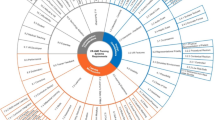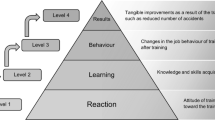Abstract
In this paper an example of Virtual Reality (VR) system design in a safety-critical training domain is discussed. In particular, a model for design is presented. This model seeks to create operational definitions of risk in the surgical domain. Perhaps more importantly, it also seeks to discover operational predictors of the risk of technology-transfer failure as a fundamental requisite for the early design. Typically both of these activities do take place in some form in most designs, but they are frequently III-conceived due to inappropriate timing, low importance, insufficient methodological rigour and the absence of a pre-existent integration model. Using examples from the Sheffield Knee Arthroscopy Training System (SKATS), we will discuss the contention that equal research effort needs to be spent on core design issues as on the technological VR design. Specifically, we will propose a set of guidelines for the research and development of risk metrics in Virtual Environment (VE) design and technology-transfer for safety-critical training.
Similar content being viewed by others
Explore related subjects
Discover the latest articles, news and stories from top researchers in related subjects.References
Wann J, Mon-Williams M. What does virtual reality Need?: human factors issues in the design of three-dimensional computer environments. International of Journal of Human-Computer Studies 1996; 44: 829–847
Satava RM. Virtual reality surgical simulator: the first steps. Journal of Surgical Endoscopy 1993; 7: 203–205
Sagar MA, Bullivant D, Mallinson GD, Hunter PJ. A virtual environment and model of the eye for surgical simulation. SIGGRAPH '94, Computer Graphics Proceedings, Annual Conference Series, Orlando, FA, 24–29 July 1994; 205–212
Ota D, Loftin B, Saito T, Lea R, Keller J. Virtual reality in surgical education. Computers in Biology and Medicine 1995; 25: 127–137
Langrana NA, Burdea G, Lange K, Gomez D, Deshpande S. Dynamic force feedback in virtual knee palpation. Artificial Intelligence in Medicine 1994; 6: 321–333
Hollands RJ, Trowbridge EA, Bickerstaff D, Edwards JB, Mort N. The particular problem of arthroscopic surgical simulation — a preliminary report. In: Computer graphics: developments in virtual environments. Earnshaw RA, Vince JA, eds. London: Academic Press 1995; 475–482
Ziegler R, Fischer G, Müller W, Göbel M. Virtual reality arthroscopy training simulator. Computers in Biology and Medicine 1995; 25(2): 193–203
Mabrey JD, Merril JR. Development of the Virtual Knee for orthopaedic surgical training and research, 1997. URL http://mabrey.uthscsa.edu/virtknee.html.
Burdea G, Coiffet P. Virtual reality technology. New York: John Wiley and Sons Inc., 1994
Alexander I. Charting a path to project success. The Computer Bulletin, July 1998. Swindon, UK: The British Computer Society; 26–27
Cuschieri A. Minimal access surgery and the future of interventional laparoscopy. The American Journal of Surgery 1991; 161: 404–407
OECD: Organisation for Economic Cooperation and Development Database. Prevalence of ambulatory surgery — percentage of knee arthroscopies carried out as day surgery. Paris, France: Chateau de la Muette, 1994
Dumay ACM, Jense G J. Endoscopic surgery simulation in a virtual environment. Computers in Biology and Medicine 1995; 25(2): 139–148
Miller W E. Learning arthroscopy. Southern Medical Journal 1985; 78(8): 935–940
OECD: Organisation for Economic Cooperation and Development Database. 1997. OECD Health data URL http://www.oecd.org
DeLee J C. Complications of arthroscopy and arthroscopic surgery: results of a national survey. Arthroscopy: The journal of arthroscopic and related surgery 1985; 1(4): 214–220
Logan I P, Wills DPM, Mohsen AMMA, Sherman K P. Virtual environment knee arthroscopy training system. In: Proceedings of the 1996 Simulation Multi-conference, 8–11 April 1996; New Orleans, LA, 11–16
McCarthy AD, Harley PJ, Smallwood R. Virtual arthroscopy training: do the ‘virtual skills’ developed match the real skills required? In: Medicine meets virtual reality 7. Westwood JD et al, eds. Amsterdam: IOS Press 1999; 221–227
Schmidt RA. Motor control and learning: a behavorial emphasis. Champaign, II: Human Kinetics Publishers Inc., 1988
McCarthy AD, Hollands RJ. A commercially viable virtual reality knee arthroscopy training system. In: Medicine meets virtual reality 6. Westwood JD et al, eds. Amsterdam: IOS Press 1998; 302–308
Nduka CC, Menzies-Gow N, Monson JRT, Darzi A. Teaching laparoscopic surgical skills: evaluation of a training programme. Minimally Invasive Therapy 1994; 3: 217–220
Bamford DJ, Paul SA, Noble J, Davies DR. Avoidable complications of arthroscopic surgery. Journal of Royal College of Surgeons of Edinburgh 1993; 37: 92–95
The Home Office. Animal (Scientific Procedures) Act, Section 5(3e), 50 Queen Anne's Gate, London, 1986
HM Inspector of Anatomy. Human Anatomy Act, Chapter 14, Section 1(1). Wellington House, Waterloo Road, London, 1984; 1–9
HM Inspector of Anatomy.Human Tissue Act, Chapter 54, Wellington House, Waterloo Road, London, 1961; 1–11
Law H, Engineering psychology: the hidden psychologist — a case study on the evaluation of the Safer Cities programme using a geographical information system. In: Engineering psychology and cognitive ergonomics, vol. 2. Harris ed. Ashgate 1996; 231–238
Author information
Authors and Affiliations
Corresponding author
Rights and permissions
About this article
Cite this article
Arthur, J.G., McCarthy, A.D., Baber, C. et al. Virtual risks: Rich domain risk and technology transfer failure as design criteria in the Sheffield Knee Arthroscopy Trainer (SKATS). Virtual Reality 4, 192–202 (1999). https://doi.org/10.1007/BF01418155
Issue Date:
DOI: https://doi.org/10.1007/BF01418155




